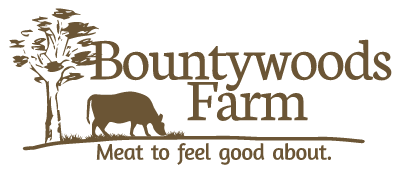Well, we are two weeks into the latest batch of gold in the making. Of course, the yellow kind isn’t much good on the farm; we make black gold. We (and you) would starve if all we had was elemental gold, but our black gold can be a big help towards feeding many people. Compost is our version of gold.

Our annual supply of fertility.
Jesse and I have been taking Matt Powers’ Advanced Permaculture Course, so this year we are doing everything right in the annual task of processing what some might call barnyard waste. Well, we’re doing the best we know at this point, anyway. We became even more convinced during the course that animal manures and many other organic materials can become valuable materials in building healthy soil. If properly done, beneficial microbes can greatly multiply in the pile. So the finished product not only adds organic matter to the soil, but more importantly, also the bacteria, fungi and other tiny creatures that the plants need for healthy growth.
Starting the compost pile

This area got too hot, causing “fire-fanging” – the white spots in the material.
Basically, the aim is to keep the material from getting too dry, and also to keep it well aerated. It is very important that there is enough air in the compost pile so that the right bacteria can work. Microbes that don’t mind low oxygen are usually harmful. If we get the pile too wet, there will also be less air. Therefore, we need to keep it from getting too wet as well as too dry.
Another important part of good composting is to have enough of both “browns” (carbon source) and “greens” (nitrogen source). However, when we keep the animals well bedded during the winter, usually there is a good balance of these materials.

Marvin turning the compost with the tractor.
We have been turning the pile with our tractor loader every two to three days. When I turn it, I try to shake the clumps apart to fluff it up. This will give the bacteria lots of air, until it settles again during the next couple of days. Then we need to aerate again.
Temperature is the main indicator that it’s time to turn it. When it gets hotter than about 60-65 degrees Celsius, we turn it. We do however, want enough heat to kill any bad bacteria and weed seeds. So we want it to be at least 55 degrees Celsius for at least two weeks. The mixing ensures that all the parts of the pile are in the hot zone at some time.
The finishing-off crew

Red Wiggler earthworms in nearly-finished compost.
After the first two weeks, the pile gradually cools off, as the energy source for the heat-loving bacteria burns up. Gradually, the next crew moves in to take over. These special workers are called “red wiggler” earthworms. They love to eat any remaining organic matter and bacteria, and they leave behind a very rich product that is perfect for growing plants in.
The beneficial bacteria and fungi will stay active until we apply it to the soil if we keep the pile covered. Covering it with a tarp, or better yet, a breathable felt material, prevents it from drying out and from getting water-logged.
Down to earth
When we spread the compost, the microbes will have found their permanent home. Here they will live around the plant roots and make minerals available to the plant roots as needed. The plant in turn makes a food product that feeds the microbes. This food also signals which minerals the plant needs to stay healthy, so it will have all the nutrients that you and I need in our bodies to stay healthy.
We have learned more details of how all this works, but even this is pretty amazing, isn’t it? (Re-read the previous paragraph if you didn’t fully get it.) A perfectly designed system, if we do our part to preserve the life in the soil. This is one reason why we don’t use synthetic chemicals; and why we try to till as little as possible.
This spring, however, has been cold and wet again, therefore the grass has been taking over in the gardens. So we do have to till, but we try to stay as shallow as possible, and not overdo it. We want to learn to do our main tillage in late summer. Then we won’t have to try to get rid of so much grass in the spring when it’s wet. We are also starting to use deep ripping with a subsoil plow to help the water to drain, and to make channels so the roots can go deeper.
The weather has also been quite cool. We have had several late frosts (in the first and second weeks of June!) This and the wet conditions on our farm has kept us from planting many of our vegetables. Our strawberries and other plants took quite a hit from these frosts. But we trust our God will still provide something to feed our family and yours. He always has provided for us in one way or another.
I hope it was useful to hear how we make our valuables (with the vital help from our vast “tiny” crew). Contact us if you have any more questions on doing your own composting. It will get you excited about making good use of what might otherwise be wasted. And you’ll get to grow some healthy food besides!
